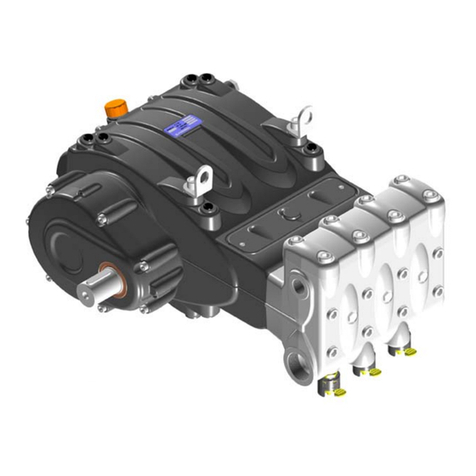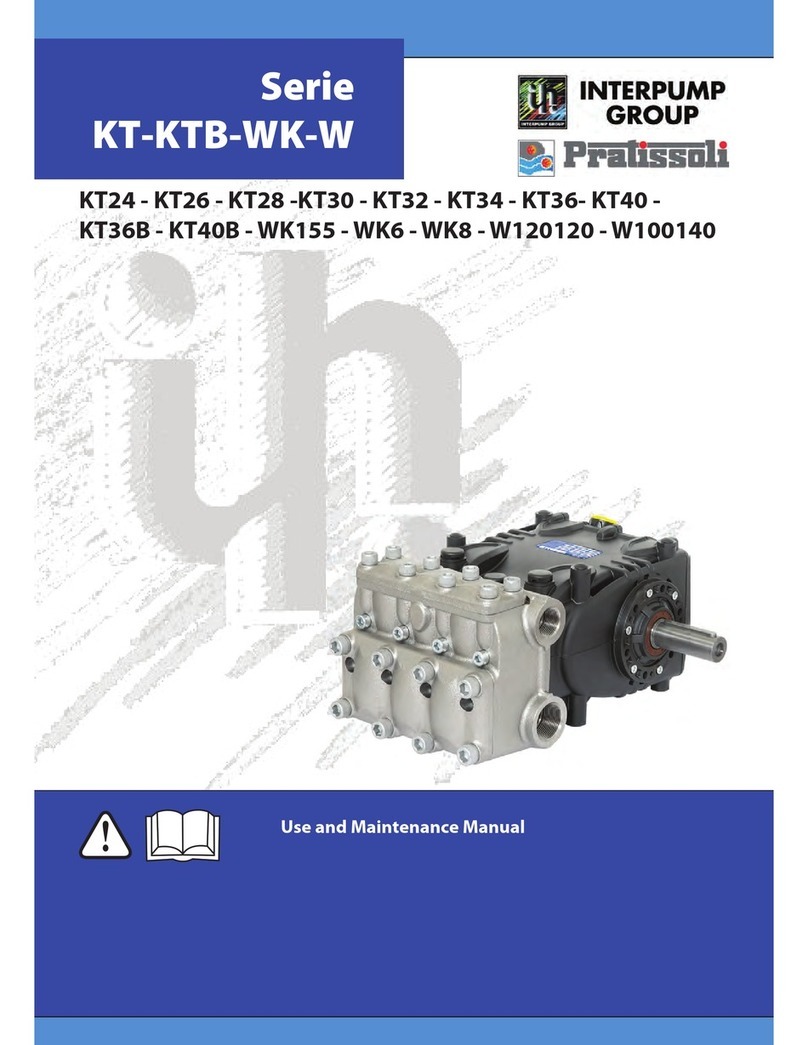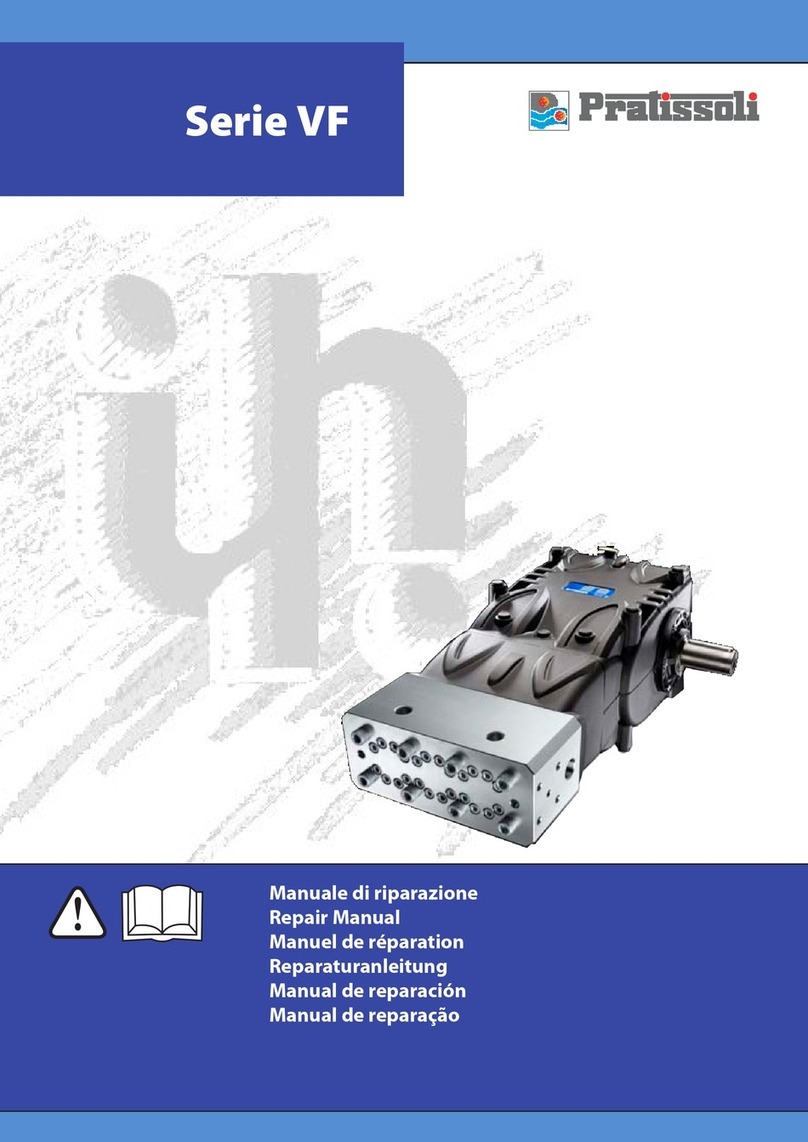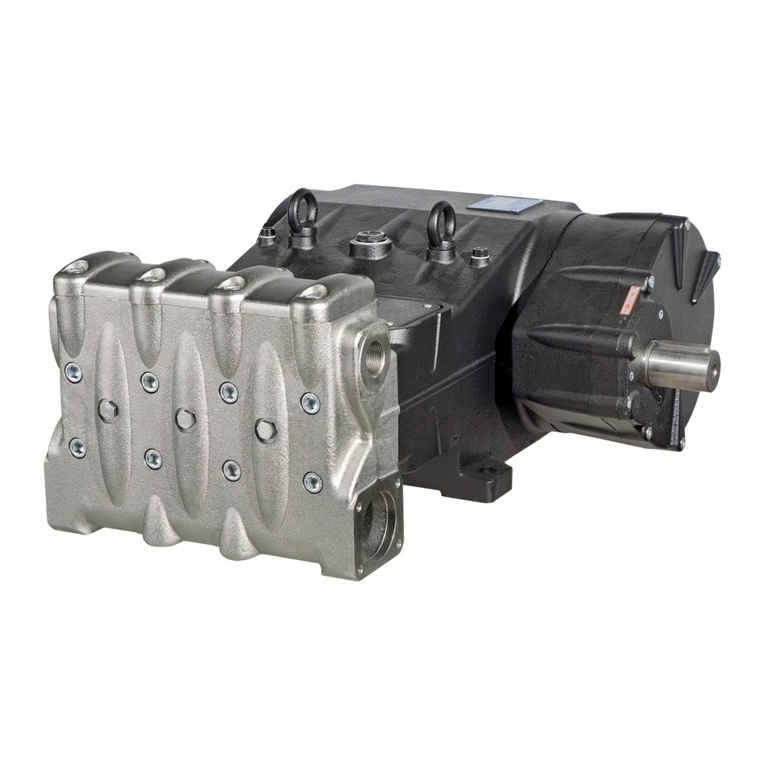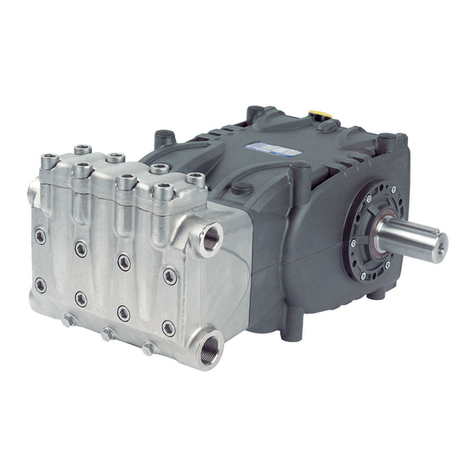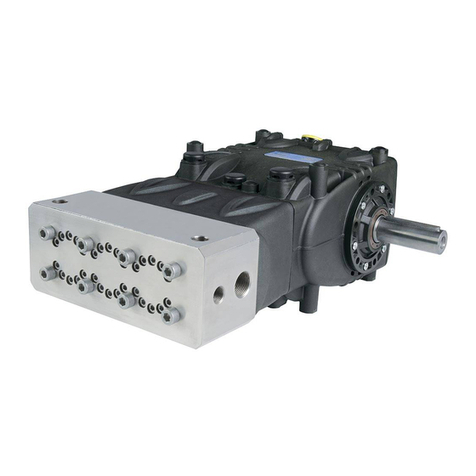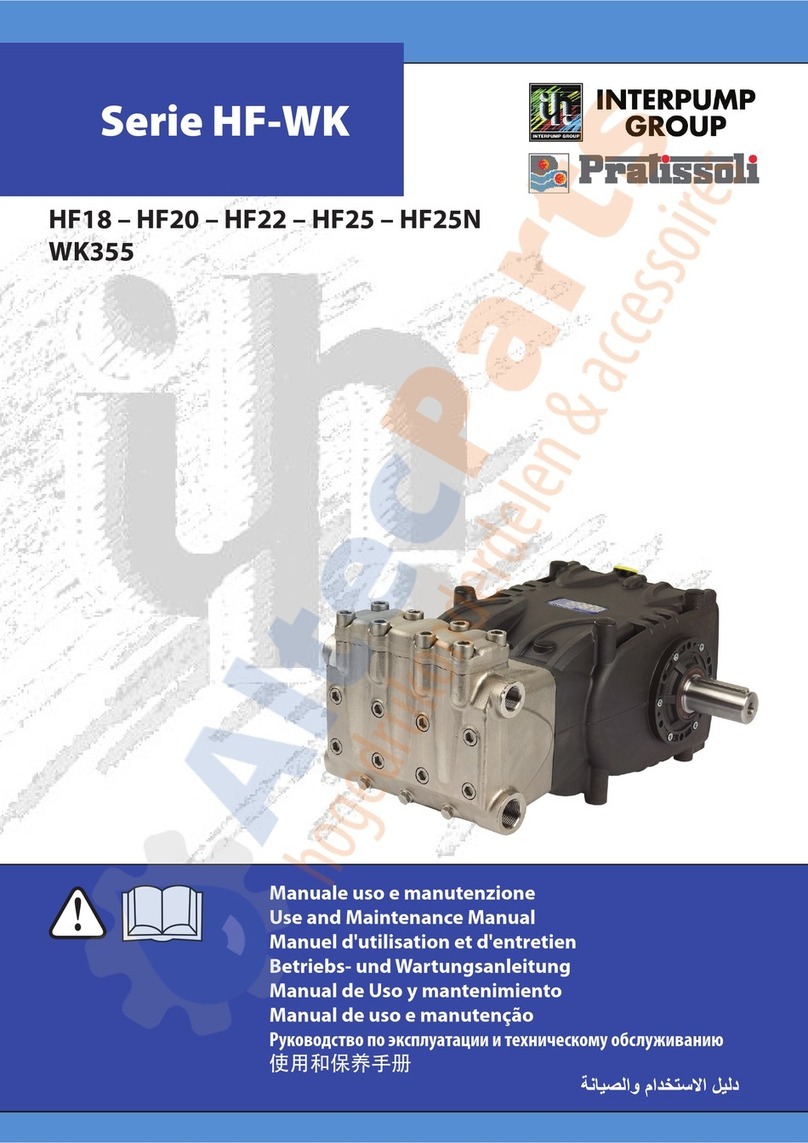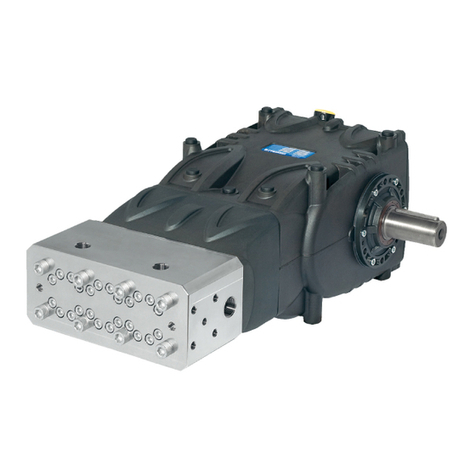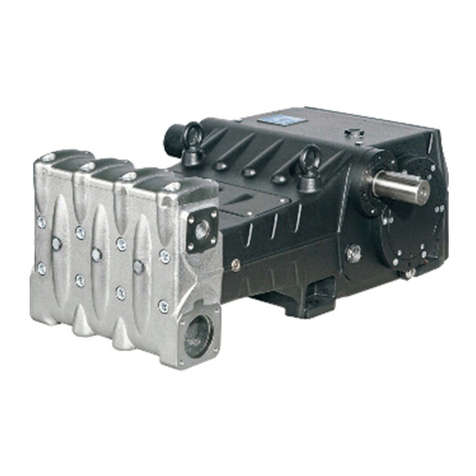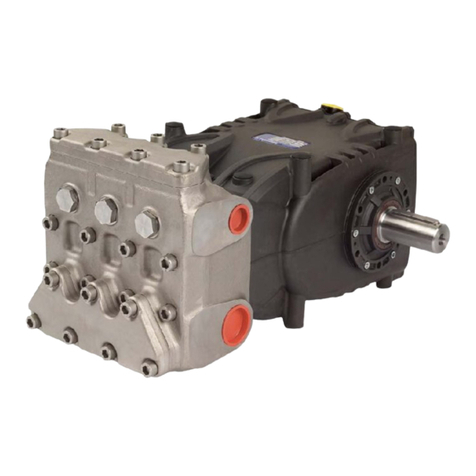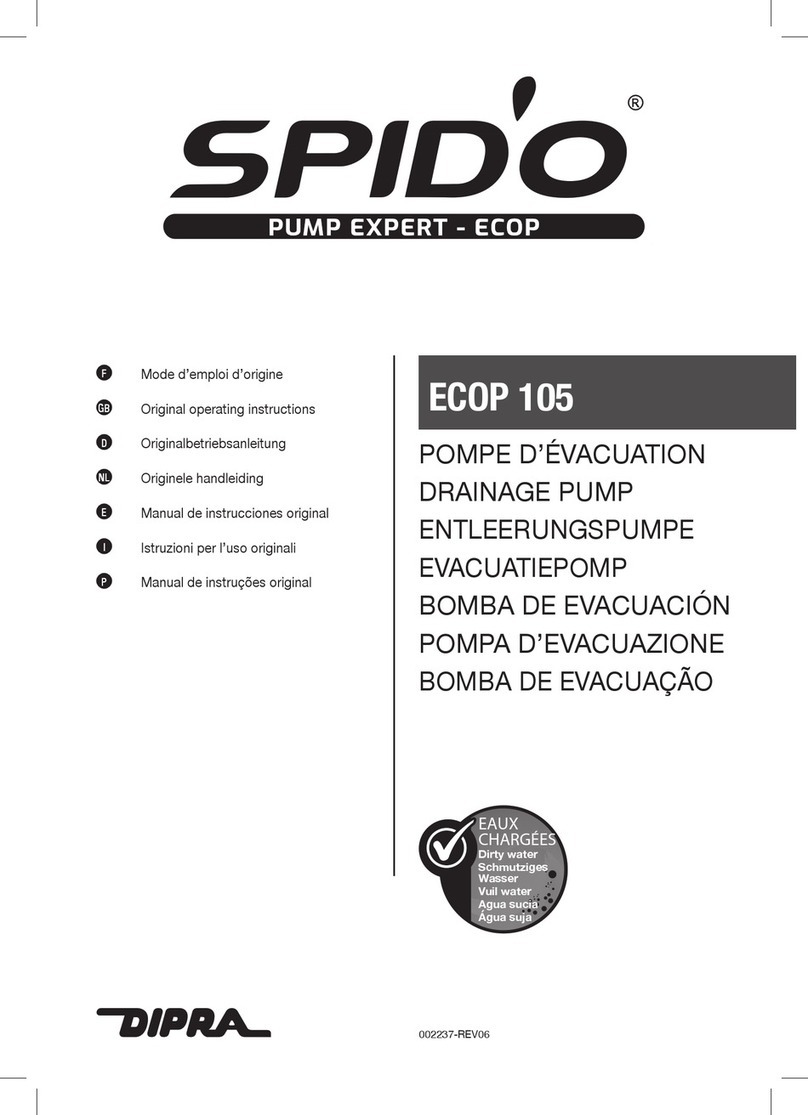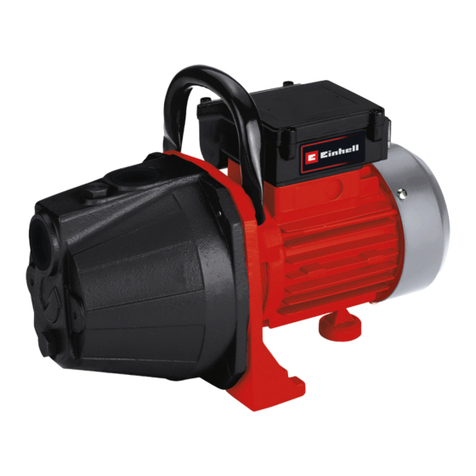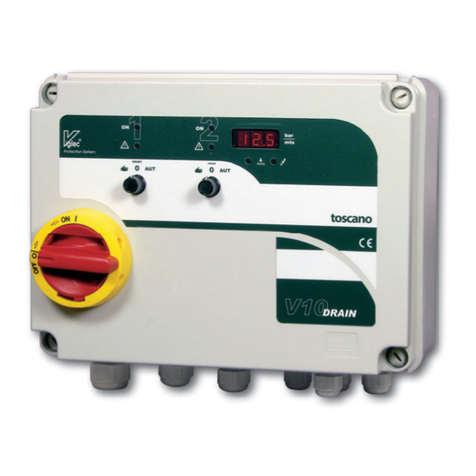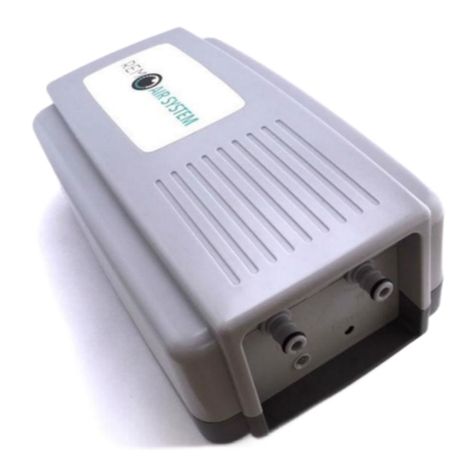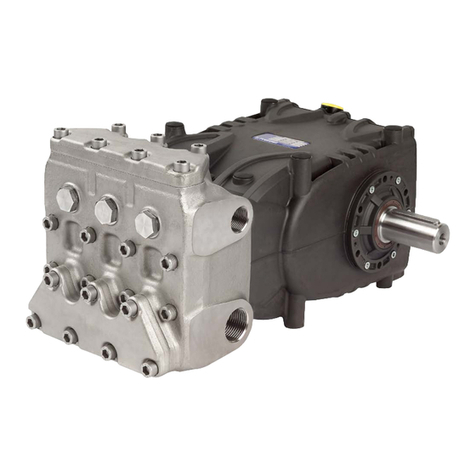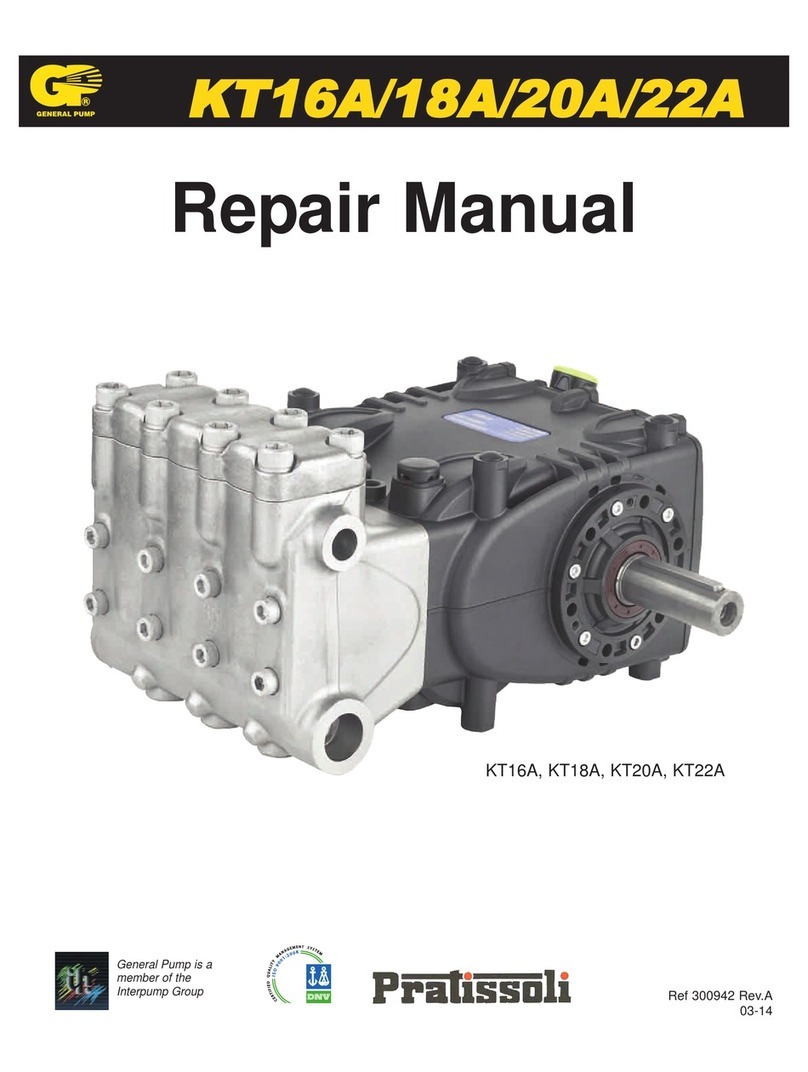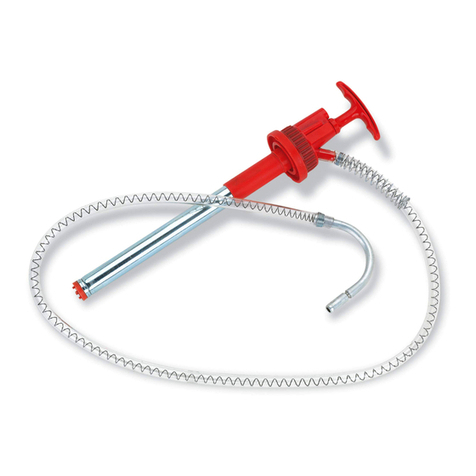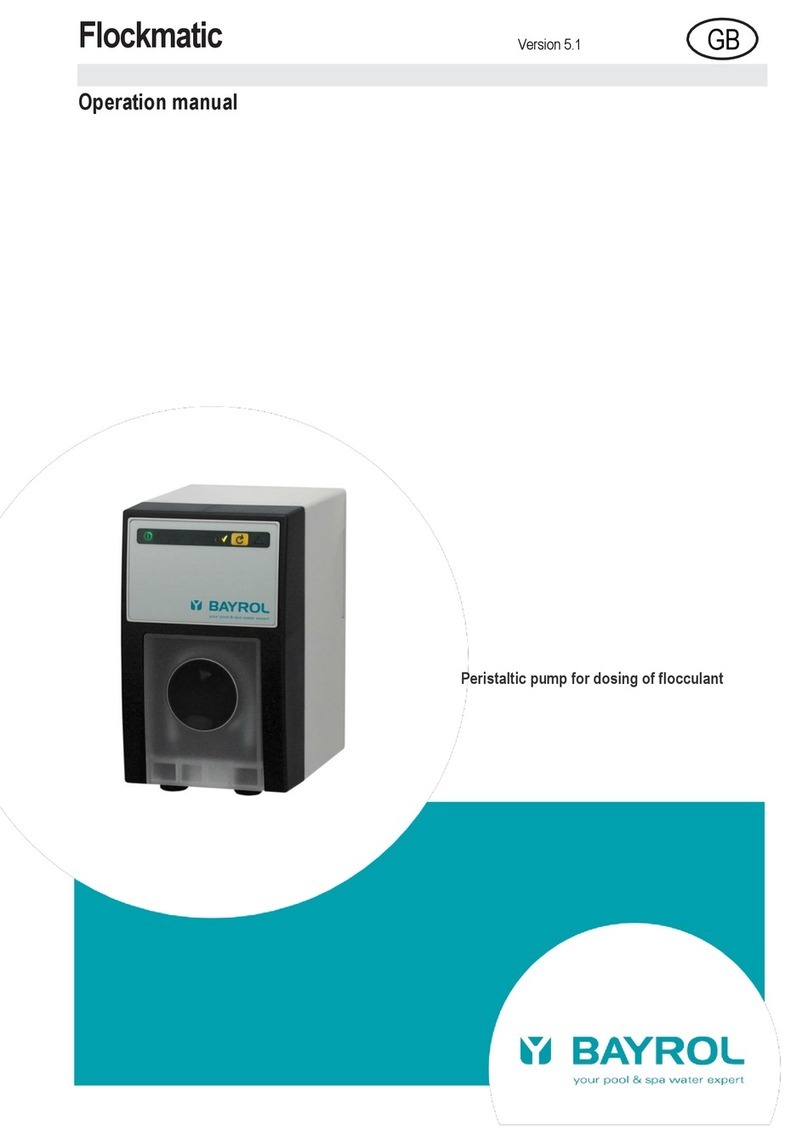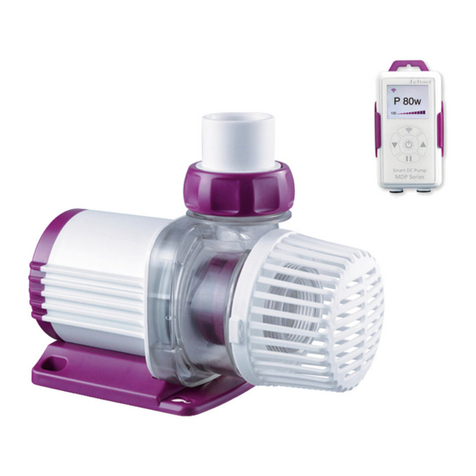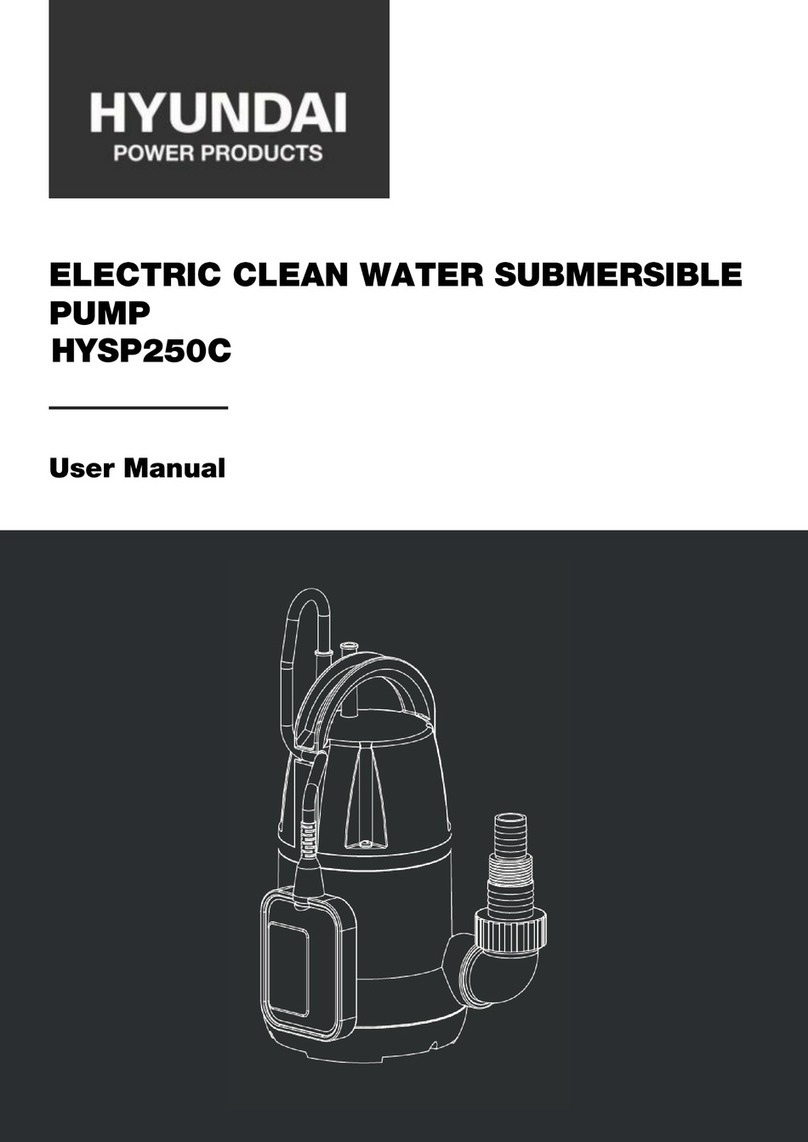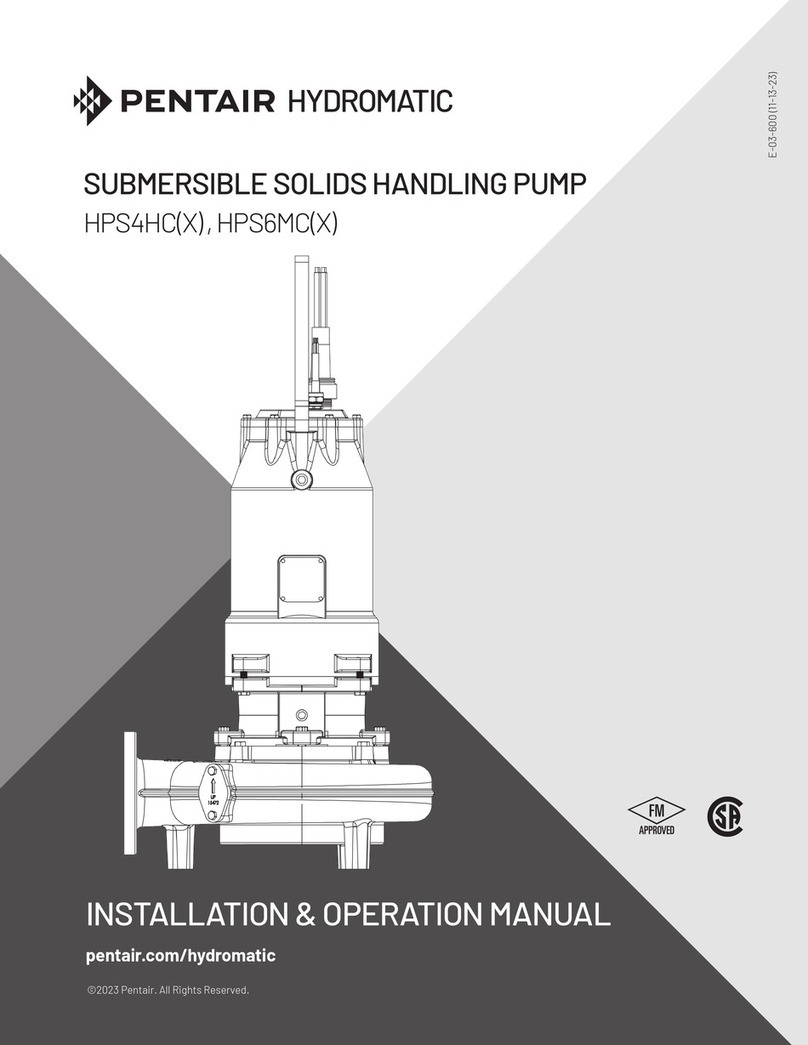
4
SH
3.3 Safety of operation
Theaccessintotheareawhereanhighpressureunitis
working should be strictly prohibited to unauthorised
personnel. The area should be suitably enclosed and
its perimeter, so far as is reasonably practicable,
cordoned off and proper warning notices displayed in
prominentpositions.
Personnelauthorisedtoenterthatareashouldhavebeen
previously trained to do so and informed on the risks
arising from failures, misuse and any unforaseeable
circumstancewhichmayoccurduring operation.Before
startingthepumpunitandbringingit up to pressure the
Operatorisrequestedtocarryoutthefollowingchecks:
1. makesurethat a correct watersupplyto the pump
isprovided.
2. makesurethatwaterinletfiltersareproperlyclean.
3. electrical components and wirings, with special
emphasisonconnections,junctionboxes,switches
and supply cables should be free from external
damages (i.e. exposed and broken wires) and
adequatelyprotectedagainstwater.
4. high pressure hose should not show apparent
external wear and the fittings at both ends should
befreefrom signs of erosionorcorrosion.
5. make sure that all fluids (lubricating oil for pump
and engine, cooling water, hydraulic fluids) are at
properlevelandingoodcondition.
6. makesurethesafety guardsareingoodconditions.
Theworkshouldstopimmediatelyandthepressuremust
bereleasedin theeventthatleakagesbecomeapparent
or if any person becomes aware of any change in
conditionor any hazard existingorbeing introduced.
Anyfailuremustbe promptlyreportedandthenchecked
bycompetentpersonnel.
3.4 General procedures for high pressure
guns/lances operation.
1. the Operator should take reasonable care of the
safetyof himself andof other personswho may be
affectedbyhisactsoromissionatwork.Hisactions
shouldbe always governed by hisgoodsense and
responsability.
2. The Operator should wear suitable waterproof
protectiveclothings,havingregardtothetypeofwork
being undertaken. The clothing set should include
adequate hand protections, suitable boots able to
ensure proper grip on wet floors, helmet provided
with full face shield, waterproof garment providing
fullcover to the Operator,including his arms.
Asmostofwaterjetsproducenoiselevels inexcess
of90 dB(A) suitable earprotectionis advised.
Note:it must be emphasised that whereas protective
clothingprovidesadequate protectionagainstsprayand
flying particles, it does not constitute complete
protection against the direct impact of the water jet.
Additional protections in the form of suitable metal
shieldsor barriers may benecessaryforcertain jetting
operations.
3. inmostjettingoperationsitisanacceptedpractise
to employ a team of Operators consisting of two
members at least, in order to provide mutual
assistanceincaseofneedandtorotatetheir duties
in case of long and heavy work. While the first
Operatorholdsthegun,thesecondOperatorattends
the pump unit, keeping close watch on the first
Operator for signs of difficulties or fatigues, and
watchingthesorroundingareafor intrusionbyother
personsorunsafesituations. Ifrequired,hewillshut
off the pressure until it is safe to continue.
4. theareainwhich the workisto proceed should be
clear of loose items and debris to prevent tripping
andslippinghazards.
5. the water jet should be directed only and always
against the workpiece, even during preliminar
operating tests prior to starting work.
6. where applicable, proper side shields should be
suitably placed to safeguard personnel and
equipment against contact with grit or particles
removedbythe water jet.
7. on no account must the Operator be distracted
during operation until the jet has been stopped.
Personnel having reason to enter the water jetting
area should wait until the jet is stopped and his
presenceknown.
8. each team member must always be aware of the
actions and intentions of other team members in
ordertoprevent any dangerous misunderstanding
occuringduringjettingoperation.
9. thepumpunitshouldnotbestartedand brought up
to pressure unless each team member is in his
designated position, the nozzle directed to the
workpiece and the lance or gun securely held.
3.5 Safety of maintenance.
Apartfromtheworkingpressureregulationnoattempt
should be made to adjust any nut, hose, fitting, ect,
while that part of the system is under pressure. The
pump should be stopped and any pressure in the line
releasedprior to makeanyadjustment.
1. the high pressure water unit should be mantained
inaccordancewiththeManufacturer’sinstructions.
2. the unit should be maintained only by competent
personnel.
3. serviceandmaintenanceshould becarriedoutwith
propertoolsinorder to preventanydamageonhigh
pressureconnections and fittings.
4. use of other than original spare parts is strictly
forbidden.






















